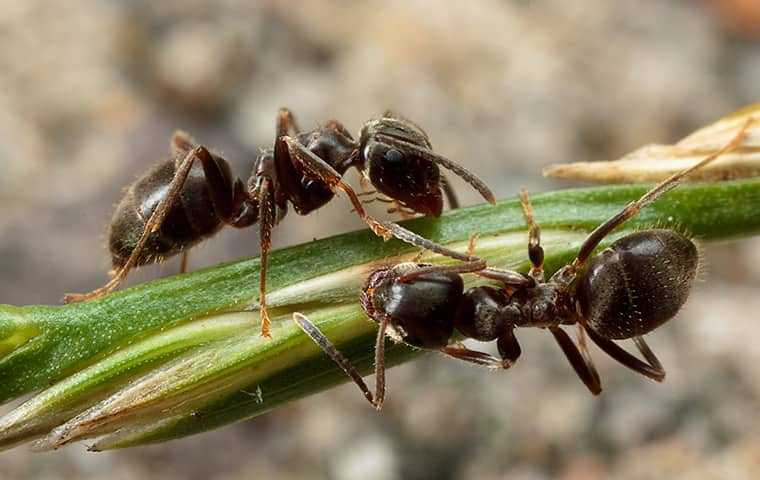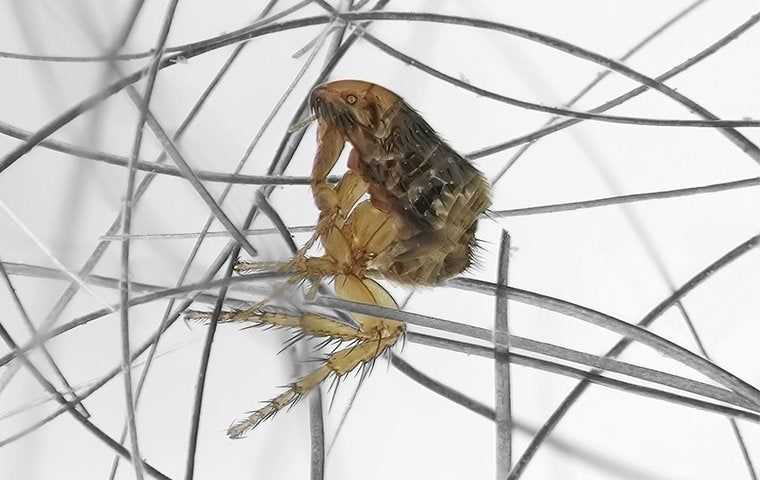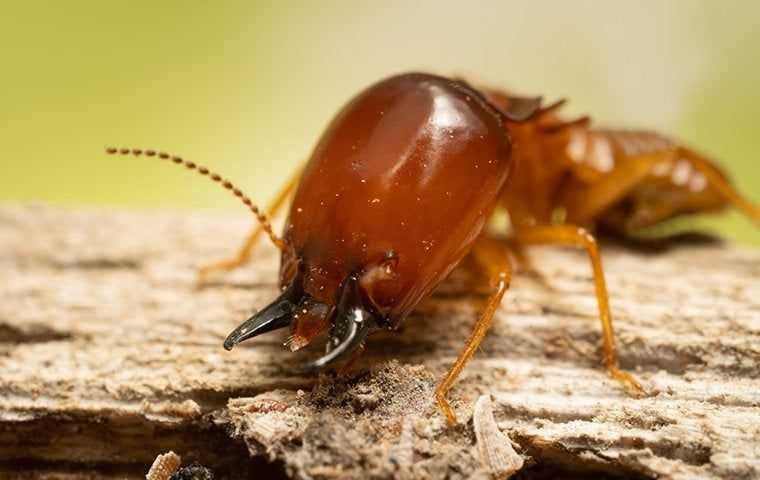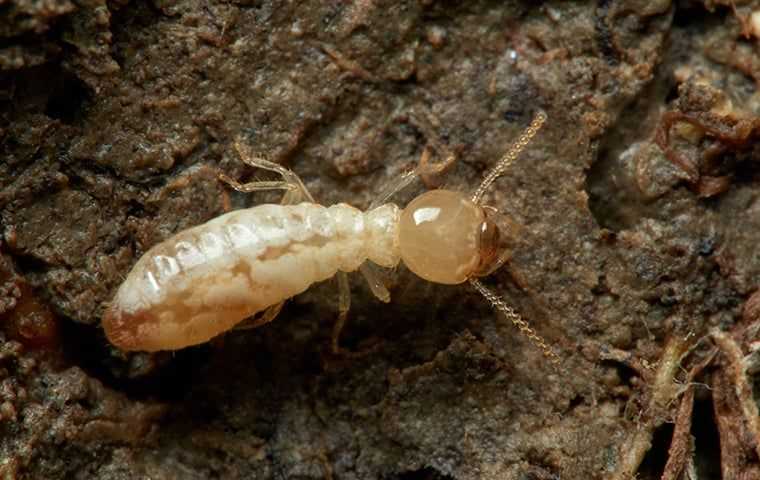What are ants?
Many types of ants frequently infest residential properties, including the following:
Acrobat Ants
Allegheny Mound Ants
Argentine Ants
Carpenter Ants
Field Ants
Fire Ants
Odorous House Ants
Pharaoh Ants
Each species varies in size, color, and appearance, but it can be difficult to tell the difference between them without the training to do so. In general, ants have a hard exoskeleton, elbowed antennae, six legs, large heads, and powerful mandibles.

Are ants dangerous?
For the most part, ants that may infest your home are nuisance pests, meaning they don't cause any health concerns for people. However, some species are dangerous to people, while others damage plants and vegetation. In addition, some cause contamination, and others can damage your home.
A few examples of the dangers ants pose are:
- Allegheny mound ants kill plants, small trees, and other vegetation.
- Ghost ants can bite but aren't aggressive, while fire ants can sting and bite and are a very aggressive species.
- Carpenter ants are wood-destroying pests that don't eat wood but tunnel through it to create nests.
- Pharaoh ants can spread pathogens such as staphylococcus, streptococcus, and salmonella.
Whether you are dealing with a nuisance species or a problematic one, no ant species is welcome in any home.
Why do I have an ant problem?
Ants commonly infest homes because they are looking for food sources. These sources can include garbage, crumbs, food debris, grease, and more.
Other reasons you might be attracting ants to your home are excess moisture, decaying wood, and easy access inside through cracks and weaknesses in your home's exterior.
Where will I find ants?
Ants can make their way throughout a home underneath the floor and inside walls, but they are regularly an issue in kitchens with plenty of food sources. They may also be an issue in bathrooms and other areas with moisture.
How do I get rid of ants?
If you are dealing with ants in your home, you shouldn't hesitate to contact All State Pest Control. We offer ant control services for residential properties. These services include:
The inspection of your property to identify the species you are dealing with.
The treatment of the interior foundation.
The application of a granular treatment throughout the property.
The treatment of baseboards, cabinets, bathrooms, and kitchens.
The use of gel baiting if needed.
Three services per year to keep ants out.
Our ant control services also come with free emergency or reservices to ensure your home remains free of ants. Give us a call at All State Pest Control today to learn more about our pest control offerings in Nassau County!
How can I prevent ants in the future?
Keep ants out of your home by utilizing these expert-recommended preventative measures:
- Eliminate food sources: Use garbage cans with tight-fitting lids, clean up food debris like crumbs daily, store food properly in airtight containers and put it in the refrigerator, and don't leave dirty dishes out overnight.
- Eliminate moisture: Repair leaks, replace water-damaged wood, and address ventilation issues.
- Eliminate harborage: Remove debris from your yard, keep foliage trimmed, and declutter your home.
- Eliminate entry points: Seal cracks in your foundation, repair any damage along the roofline, and fill gaps around windows and doors.
Contact All State Pest Control to set up an inspection of your property and get your ant problem under control.
Recent Blog Articles

Are you experiencing a flea infestation? Today, local pest control companies have safe and effective treatment options for these potentially-dangerous pest...
Read More
Learn more about the damage termites can do in your Manhattan home, what attracts them, prevention tips, and how to eliminate them with Allstate Pest Contr...
Read More
Are termites actively eroding a wooden structure on your property? Promptly contact a local pest control professional before further damage occurs.
Read More




